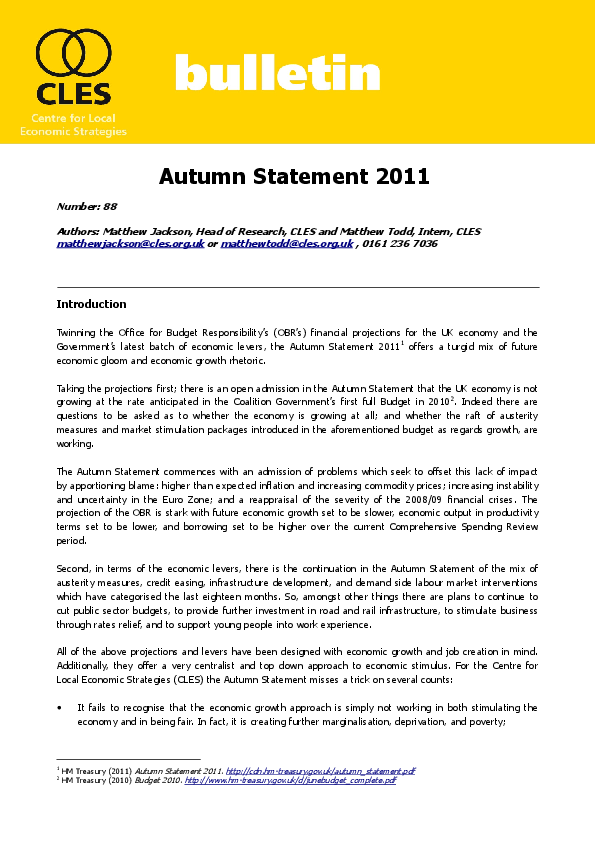Autumn Statement 2011
The Autumn Statement commences with an admission of problems which seek to offset this lack of impact by apportioning blame: higher than expected inflation and increasing commodity prices; increasing instability and uncertainty in the Euro Zone; and a reappraisal of the severity of the 2008/09 financial crises. The projection of the OBR is stark with future economic growth set to be slower, economic output in productivity terms set to be lower, and borrowing set to be higher over the current Comprehensive Spending Review period.
Second, in terms of the economic levers, there is the continuation in the Autumn Statement of the mix of austerity measures, credit easing, infrastructure development, and demand side labour market interventions which have categorised the last eighteen months. So, amongst other things there are plans to continue to cut public sector budgets, to provide further investment in road and rail infrastructure, to stimulate business through rates relief, and to support young people into work experience.
All of the above projections and levers have been designed with economic growth and job creation in mind. Additionally, they offer a very centralist and top down approach to economic stimulus. For the Centre for Local Economic Strategies (CLES) the Autumn Statement misses a trick on several counts.
This bulletin seeks to explore critiques of the Autumn Statement 2011 in more detail and highlight how members of CLES should respond.



